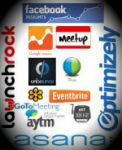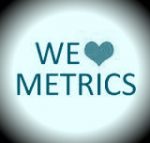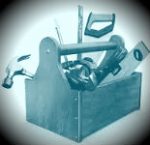
by Rita Baker | Nov 30, 2016 | Lean Startup
In this series of posts we have looked at how to use Lean Startup during the ideation and discovery phases. We also dove into the experimentation process and the tools to use in the discovery phase.
In this post, we’ll look at how to use Lean Startup in your pre-sell phase.
What is the pre-sell phase?
 The pre-sell phase begins when you have sufficiently tested your leap-of-faith assumptions of your business model to be confident that you have a shot at a viable business. This not because you believe so (as you did in the ideation phase) but because most (or all) of your business’s stakeholders (potential customers, suppliers, distributors, etc.) have told you so.
The pre-sell phase begins when you have sufficiently tested your leap-of-faith assumptions of your business model to be confident that you have a shot at a viable business. This not because you believe so (as you did in the ideation phase) but because most (or all) of your business’s stakeholders (potential customers, suppliers, distributors, etc.) have told you so.
Typically, during the pre-sell phase you will be:
- Finding a (or several) co-founder(s)
- On-boarding your first employees
- Developing your product/service
- Starting to put into place some key partnerships
This is also the phase at which you will start getting real feedback from paying customers[1] (closer to the end of the pre-sell phase) and other stakeholders. It’s the reality test.
A test, unfortunately, many startup ideas fail. It’s when you will either:
- Make significant pivots,
- Change your mission entirely (go back to square one)
- Throw in the towel, or
- Confirm your business model
The end of this stage, when successful, is also often the time to go for seed funding.
Why continue experimenting?
 So now that you have confirmed your business model, why should you continue experimenting? It would be so much faster to just go full steam ahead and develop.
So now that you have confirmed your business model, why should you continue experimenting? It would be so much faster to just go full steam ahead and develop.
Your ideation and discovery phases were mostly planning. As you know, plans usually don’t work out the way we think they will.
Also, during the time you take to put in place your business model, elements of your business’s eco-system as well as market realities will change. The higher the volatility of your business environment, the more important it is for you to test the elements of your business model while developing. Otherwise you may expand great efforts and resources to develop key partnerships, distribution networks, and develop your product/services for nothing.
This may not seem so bad from this end of the journey. Entrepreneurs who put every ounce of energy they had and every penny they owned (and some they don’t), for a few years, in a business that doesn’t lift off will tell you it’s as difficult as going through a death in the family. Some never fully recover.
Lean Startup experiments in the pre-sell stage
The mechanics of the experiments we saw in the discovery stage will be the same.
You will still start by asking yourself; Will the negative impact on my future business be significant if the assumption I am making (regarding whatever part of your startup you are currently working on) isn’t real? If the answer is yes, you turn it into a hypothesis you can test. You design your experiment using tools to minimize your efforts, chose your metric and standard and execute your experiment.
By this time, you will be getting very good at experimenting. Hence most of your experiments will take you less than a couple of days to run and often only a few hours or minutes.
Also, because you will have gotten out of the building often during your discovery phase experiments, you won’t need to talk to your stakeholder face to face as much. Many of your experiments will be done on the web or over the phone. You can also hire people to do them for you.
There will be times however when you aren’t sure of your next steps. This is usually the flag that means you need to go be around your potential customers. Talking or observing them. They will invariably show you the way.
At this stage, you will not only be testing elements of your product/service you will also be testing your distribution channels. The web will be your first one if you’re using it. Also, if you are thinking of launching in markets that are not physically close to you, now is the time to start testing with those markets.
Not only will you be familiarizing yourself with the tools to find those markets but also you will, hopefully, have developed the reflex to go to the Lean Startup community for assistance.
The tools of Lean Startup
 Now that you will most likely have a, or several, co-founder(s) and employee(s), often not in the same city or working space, efficient communication will be a real need.
Now that you will most likely have a, or several, co-founder(s) and employee(s), often not in the same city or working space, efficient communication will be a real need.
Slack, Trello and Dropbox may already be part of your daily routine. You may now want higher performance project management tools (such as Asana, Jira or Wrike[2]) or to start taking notice of Slack management best practices.
If you’ve embraced the integrated multiplatform communication route of Slack, you may also want to look at some of its competitors such as Bitrix24 and HipChat.
If your product is IT application, you’ll want to use one of the thousands of productivity apps available, often for free, to help you develop and test it. Tools such as Balsamiq Mockups , Fluid UI or HotGloo for wireframing. GitHub, Zappier or LucidChart for developing your application. Test Fairy, Hiptest or SauceLabs for automated testing. Once your app is functional you can also put it up on Product Hunt and see what kind of reaction you get from a crowd of mostly innovators and early adopters.
If you are developing a non IT product, you can look for tools such as Ask Your Target Market (AYTM), Facebook or Survey Monkey and combine them with any potential customer email lists or profiles you have already collected.
You will also need to use your creativity to design experiments such as webinars or gatherings to have potential users interact with your product. Tools such as Meetup, Eventbrite, GotoMeeting will be very useful.
When you want to start testing packaging and pricing, A/B testing will be your friend. A/B testing is also very useful to test the conversion rates of different elements of your web pages. Tools such as Unbounce, Optimizely and LauchRock will be necessary unless you hold a degree in statistics.
If you are launching a new restaurant or brick and mortar business sites such as Potloc can help you find the best location and get feedback from potential customers.
Upping your game on metrics
 Experimenting and collecting all this information is great. You’ll need however to store, crunch and make sense of all of this data.
Experimenting and collecting all this information is great. You’ll need however to store, crunch and make sense of all of this data.
You’ll also need to figure out what metrics will be the key ones for your business. If you haven’t read Lean Analytics (Croll & Yoskovitz) yet, you need to by now.
Analytics is one of the parts of Lean Startup that isn’t intuitive. There is knowledge involved here, quite a bit of it. The learning curve is steep. If you will be running an online business (fully online or parts of it) you definitely need some deep analytics knowledge in your company.
Zoho Reports, Segments and Tableau are all great options. Initially you may however simply use an Excel spreadsheet in conjunction with Google Analytics. By the end of this stage, you may find however that the home grown solution requires too much time to manage and you’ll see value in the previously mentioned apps.
As you can see applying the Lean Startup approach gets easier and easier as your startup grows.
The next post of this series will be on how to apply Lean Startup during the concierge phase of your startup.
[1] Although you may be selling at a discount or simply selling and reimbursing as your product is not yet ready.
[2] Doesn’t integrate with Slack

by Rita Baker | Nov 16, 2016 | Marketing
Would you have taken a bet that offered you 10 to 1 odds that anyone but Donald Trump would be elected President back in July 2016? I’m guessing you would have. I know I would have and probably bet a bundle. After all, it was obvious that most Americans thought Trump’s views were too extreme. The British parliament even debated on banning Trump from the UK. Well we’d both be poorer now and scratching our heads as how this outcome came to be.
This scenario is similar to one where an entrepreneur believes that everyone will want to buy the product he/she is making. After all, the product solves an obvious and important problem that so many people have. You wouldn’t think twice about buying it, so why would anyone else.
Let’s see the factors that can lead us to be so bad at predicting our customers needs.
There are realities you don’t even know exist
 Experience, environment and nature, are responsible for shaping beliefs and thought processes. They differ from one person to the next.
Experience, environment and nature, are responsible for shaping beliefs and thought processes. They differ from one person to the next.
Although nature (human biology) may be similar from one person to the next, environments are not. This is harder to remember given most people we exchange with on a daily basis share similar environments to ours. Experience, which is the sum of all the various situations we were in and how we reacted to them since birth, differs even more greatly from one person to the next.
Although we all know that others don’t think like we do or have the same reality, we sometimes forget to what extent they differ from ours.
This explains why designing an experiment, that captures other people’s realities, is so difficult. It also explains why it is so difficult to interpret other people’s answers accurately. The less we know about our respondents’ experiences and current reality, the more difficult it is to interpret their answers. Hence, we will tend to fill in the blanks with elements of our own reality. This will give us a distorted view.
The lesson learned here is:
- try to understand your respondent’s environment as much as you can before asking them questions
It will ensure you ask the right questions with words that will mean the same to them as they mean to you. It will also enable you to interpret their answers correctly.
Things change, sometimes overnight
 Unforeseen events happen and change realities and the choice set we have. In the political sphere this could mean email scandals. In the product world it could mean new regulations, new competitors or technologies that pop up overnight.
Unforeseen events happen and change realities and the choice set we have. In the political sphere this could mean email scandals. In the product world it could mean new regulations, new competitors or technologies that pop up overnight.
These new realities can sometime remove existing problems. They can also give potential customers more choices as how to solve their problems. Finally, they can leave them so uncertain about their choices, that they will need a lot more time and energy to evaluate their options. This situation is well captured in the innovation adoption curve.
The lessons learned here are
- You need to act fast on survey results as environments can change quickly
- When the respondents’ choice sets are in flux, you may have some of them who can’t or won’t make choices
We are willing to put up with a lot to stay true to our identity
 Certain behaviours we have take root in our own self image. When US voters identify themselves as Republicans or Democrats they don’t only refer to how they cast their ballot. They often refer to a part of their sets of beliefs. However strongly they feel against a representative of the party, they won’t vote against their identity. They’ll just find a way to rationalise their decision. This is part of the concept of cognitive dissonance.
Certain behaviours we have take root in our own self image. When US voters identify themselves as Republicans or Democrats they don’t only refer to how they cast their ballot. They often refer to a part of their sets of beliefs. However strongly they feel against a representative of the party, they won’t vote against their identity. They’ll just find a way to rationalise their decision. This is part of the concept of cognitive dissonance.
Some consumers may see the value proposition you offer them clearly but won’t purchase your product. Because part of their identity ties in to doing the work the way they always have done it.
The lesson learned here is:
- You may need more time and effort to convince your customers to adopt your product/service when it affects their identity
Why do polls/surveys get it wrong?
 We won’t reveal (to strangers) actions, beliefs or views that we think will affect their image of us negatively. This is cognitive dissonance at work.
We won’t reveal (to strangers) actions, beliefs or views that we think will affect their image of us negatively. This is cognitive dissonance at work.
This is why it is so important to test your market on their actions rather than on what they say. Especially when you don’t know how important cognitive dissonance is for a particular choice.
The lesson learned here is:
- Cognitive dissonance will skew your survey results significantly
Here is one last lesson to keep in mind. However wrong you may have been at predicting an outcome there is always something you can learn from the thought process that led you there. You can learn from it and improve your future predictions.

by Rita Baker | Nov 1, 2016 | Lean Startup
This post follows Lean Startup Experiment – Discovery Phase. It will help you find Lean Startup tools that will accelerate your experiments significantly. Many of these Lean Startup tools increase productivity and can also be used on a daily basis in your business.
None of these tools, aside from the Javelin board and the experiment log template were developped specifically to be used within the Lean Startup approach. They are simply productivity tools that enable fast and efficient Lean Startup experiments.
 Lean Startup Tools
Lean Startup Tools
Lean Startup tools make continuous experimentation throughout your startup feasible. Many of those tools are free or cost very little. None of the tools presented in this post were developed specifically for Lean Startup. They are simply productivity tools that are used by the Lean Startup community to increase their productivity.
The following are some of the tools I find most useful and often recommend when entrepreneurs are in the discovery phase. Keep in mind there are hundreds if not thousands more of these tools out there. A bit of googling and asking around will yield you many options to accomplish the same task.
 Lean Startup tools to organise
Lean Startup tools to organise
These applications are great as they often work as a checklist as well as organisers. The following Lean Startup tools are all free or have free parts to them. Click on the titles for links.
Ash Maurya has graciously made his Lean Canvas application, which is very well made, free for your first project. It will help you keep a record of the various iterations, enable you to share with other team members and print your canvas.
Free business model canvas application developed by Johan Steenkamp. It has some really great features such as various colours for your post-its, picture and sketching capabilities as well as communication features for your team.
This is a great tool to start figuring out your cost and revenue model. It will act as a check list of all the items you need to take into consideration in your revenue statement. As you progress in your startup, Budgeto will also take care of most of your accounting needs.
 Lean Startup Tools to communicate/collaborate
Lean Startup Tools to communicate/collaborate
If you don’t yet know about Slack, you must. It’s an instant messaging app, on stereoids, that allows you to connect just about any other popular productivity tool such as Dropbox, Google docs or Hangouts, Skype, Trello and hundreds more. It’s mobile friendly so it will enable you to keep in touch with your team wherever you are.
Trello is one of the many simple and intuitive project management tools out there. Trello is the only full application that still offers free access. It is very powerfull and still simple to use. Other project management platforms such as Asana and Basecamp are even more complete but don’t offer any free versions.
Dropbox
Definitely one of the best ways to share large files and documents. It’s as simple to use as can be and is entirely free unless you are a power user.
 Lean Startup tools to run my first experiments
Lean Startup tools to run my first experiments
Javalin first developed the Experiment Board for the Lean Startup Machine a couple of years ago. They are now developing it in an app and are still in the testing phase. Until the app is out, you can get a Google docs version of it and print it out. Watch this great video tutorial, from Grace Ng, of how to use the Experiment board.
This book contains over a dozen techniques to help you conduct offline experiments. Each technique is well explained and illustrated with an example. If you’re not familiar with data gathering techniques, it’s the best place to start.
Powerful online survey creation and data analysis application. It’s free for basic forms and data crunching. It has more survey question options and data analysis capabilities than AYTM and GCS. You must provide your own participants list.
Google Forms enables you to create surveys that you can send to your own participants list. Google Consumer Surveys provides the participants and you only pay for completed questionnaires. Pricing starts at $0.10USD per completed survey.
Similar to Consumer Surveys AYTM offers highly targeted participants to answer your surveys.
Pricing starts at about $1USD per participant. AYTM boasts over 25 million survey or experts panel participants.
Experiment log
As of writing this post, I haven’t seen any experiment log templates or application to facilitate the keeping of a journal of your experiments.
Hence, I created one for my own use that I will share with you. It’s a simple Excel spreadsheet that you can modify as you see fit. The important part is to keep your rows constant over time so you can have a base to compare.
Keeping an experiment log is a pain and requires some time and effort. Hence, if you don’t plan on going to VCs for funding, it’s not a must to keep one.
An added benefit of the log is that of a training tool when you onboard other members. Careful reading of this journal will help your new recruits know about your young corporate history and learn from you previous mistakes and wrong turns.
Note: I will add the experiment log template to this post very soon.
 Tapping into the Lean Startup community
Tapping into the Lean Startup community
Some of the most important resources found in Lean Startup are its local and international communities. It is by far the entrepreneurial community that is the most generous with its time and knowledge that I have encountered.
Locally, you have Lean Startup Circles members that meet periodically to learn, practice and exchange on Lean Startup experiments, tools and resources. Circles have experienced coaches that can help you with any part of your experiments.
You can locate the Lean Startup Circle nearest you by consulting the list on the Lean Startup wiki. Most of them, such as the Montreal LSC, have a Meetup page, Facebook page and/or website where you can register to become part of the community.
Once you are part of a Lean Startup Circle community you will gain access to the Lean Startup Slack channels by asking your local organisers. These channels encompass hundreds of members that form a help community.
If you are stuck somewhere in your experiment, are looking for a tool, experiment design ideas, want to know how to go about testing a foreign market, your local and virtual Lean Startup communities will be there to help.
 The next phase
The next phase
Once you have acquired sufficient knowledge on your various stakeholders and have attained a certain level of validation with your business model, you will want to put it to the test.
The next phase will be about validating your business model where it counts; in the market. It is the true acid test. This phase is also sometimes referred to as the Valley of Death. It is when most start-ups end up dying in the Lean Startup approach.
This phase will also be when you start developing your product/service. The good news is if you can’t find any way to have your product/service fly in the market, you will not have spent months or years working on it.
The next post will guide you through this phase using Lean Startup. It will show you how Lean Startup can help transform, some (no, not all) ideas that would have died, into lucrative ventures. We will also present tools and tactics that can help you survive these difficult times.

 The pre-sell phase begins when you have sufficiently tested your leap-of-faith assumptions of your business model to be confident that you have a shot at a viable business. This not because you believe so (as you did in the ideation phase) but because most (or all) of your business’s stakeholders (potential customers, suppliers, distributors, etc.) have told you so.
The pre-sell phase begins when you have sufficiently tested your leap-of-faith assumptions of your business model to be confident that you have a shot at a viable business. This not because you believe so (as you did in the ideation phase) but because most (or all) of your business’s stakeholders (potential customers, suppliers, distributors, etc.) have told you so. So now that you have confirmed your business model, why should you continue experimenting? It would be so much faster to just go full steam ahead and develop.
So now that you have confirmed your business model, why should you continue experimenting? It would be so much faster to just go full steam ahead and develop. Now that you will most likely have a, or several, co-founder(s) and employee(s), often not in the same city or working space, efficient communication will be a real need.
Now that you will most likely have a, or several, co-founder(s) and employee(s), often not in the same city or working space, efficient communication will be a real need. Experimenting and collecting all this information is great. You’ll need however to store, crunch and make sense of all of this data.
Experimenting and collecting all this information is great. You’ll need however to store, crunch and make sense of all of this data.

 Experience, environment and nature, are responsible for shaping beliefs and thought processes. They differ from one person to the next.
Experience, environment and nature, are responsible for shaping beliefs and thought processes. They differ from one person to the next. Unforeseen events happen and change realities and the choice set we have. In the political sphere this could mean email scandals. In the product world it could mean new regulations, new competitors or technologies that pop up overnight.
Unforeseen events happen and change realities and the choice set we have. In the political sphere this could mean email scandals. In the product world it could mean new regulations, new competitors or technologies that pop up overnight. Certain behaviours we have take root in our own self image. When US voters identify themselves as Republicans or Democrats they don’t only refer to how they cast their ballot. They often refer to a part of their sets of beliefs. However strongly they feel against a representative of the party, they won’t vote against their identity. They’ll just find a way to rationalise their decision. This is part of the concept of cognitive dissonance.
Certain behaviours we have take root in our own self image. When US voters identify themselves as Republicans or Democrats they don’t only refer to how they cast their ballot. They often refer to a part of their sets of beliefs. However strongly they feel against a representative of the party, they won’t vote against their identity. They’ll just find a way to rationalise their decision. This is part of the concept of cognitive dissonance. We won’t reveal (to strangers) actions, beliefs or views that we think will affect their image of us negatively. This is cognitive dissonance at work.
We won’t reveal (to strangers) actions, beliefs or views that we think will affect their image of us negatively. This is cognitive dissonance at work.
 Lean Startup Tools
Lean Startup Tools Lean Startup tools to organise
Lean Startup tools to organise Lean Startup Tools to communicate/collaborate
Lean Startup Tools to communicate/collaborate Lean Startup tools to run my first experiments
Lean Startup tools to run my first experiments Tapping into the Lean Startup community
Tapping into the Lean Startup community The next phase
The next phase